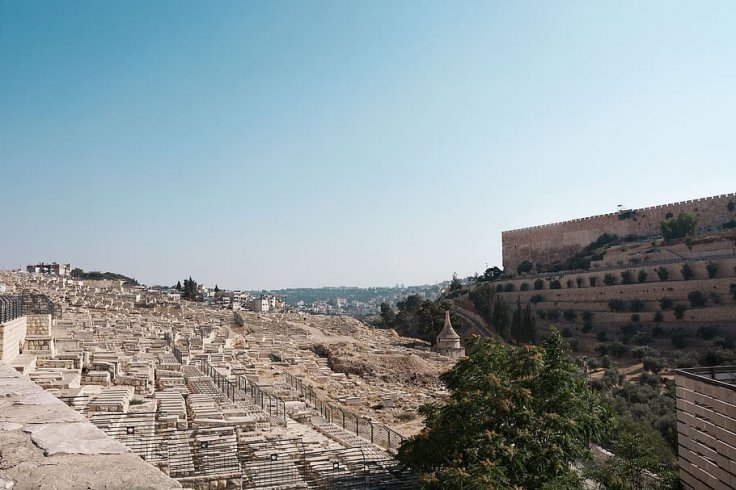While Israel is in the middle of boosting housing complex construction to support its rapidly growing population, there are researchers who fear that the country is not doing enough to conserve its wealth of archaeological sites.
Israel has maximum archaeological sites compared to other countries in the Mediterranean -- almost 35,000 sites in a country of 22,145 square kilometers.
En Esur or Ein Asawir is known as one of the most important ancient sites in Israel located in the northern Sharon Plain. As per the historical evidence, this site includes an archaeological mound, called Tel Esur or Tell el-Asawir, another unnamed mound, and two springs. During the Bronze Age, a massive fortified proto-city with an estimated population of 5,000 to 6,000 people existed there which made it the largest city in the region that was bigger than other significant sites such as Tel Megiddo and Tel Jericho.
As the archaeologists and excavators are still trying to find out underground and untouched remains, including a massive temple at En Esur, the researchers fear that these uncovered parts will remain buried under the road intersection for decades, maybe longer.

The History Doesn't Matter Now
Archaeologists believe that hundreds of such sites might also be buried or destroyed, as most excavations are salvage digs undertaken by the Israel Antiquities Authority (IAA). Such digs are conducted to document archaeological remains in danger of destruction because of development plans. But it is rare for IAA to block construction on top of an important archaeological site or preserving some portion of the site from being destroyed, said Yonathan Mizrachi, the chief executive of Emek Shaveh, which is an Israeli non-governmental organization based in Jerusalem.
Last year, the salvage digs accounted for over half of the 424 licenses issued by the IAA for archaeological excavations and surveys. In almost all cases, after the excavation and removal of valuable artifacts, construction projects were allowed to proceed, says Mizrachi.
In Turkey, a historical site on the Tigris river, the 12,000-year-old town of Hasankeyf, has slowly been submerged beneath the new Ilısu dam. But protecting archaeologically valuable sites in Israel is particularly problematic compared with other countries, said archaeologists.
Growing Population Threatening Archaeology Sites

As per a report by Nature, Uzi Dahari, a former deputy director of the IAA explained that the majority of the IAA's budget comes from the salvage digs before construction projects and the government itself is the biggest developer in Israel. The country is also now focusing on construction programs to support the growing population.
But as per the archaeologists, the government favors saving ancient Jewish sites, especially in Jerusalem, over ones linked to other religions, as there are no "red lines, or any understanding or rules [for] what should be kept and should be destroyed," says Mizrachi.
As per Gideon Avni, the head of the archaeology division at the IAA, the agency follows criteria established by the United Nations Educational, Scientific and Cultural Organization while deciding whether or not a site should be saved permanently, or covered and built on.
Funding Dilemma
Some archaeologists believe that many sites in Israel would not be excavated at all if it weren't for the construction projects that provide funding and an impetus for digs. They also noted the fact that the growing population will not let anyone preserve archaeological sites in the country. Currently, the country has a population of over nine million and by 2065 according to the Israel Central Bureau of Statistics, the population is predicted to swell to 20 million.

Dahari said on one hand IAA's responsibility is to restore and to protect archaeological sites, but "on the other hand, if you will tell the constructor, 'don't build, because this is an archaeological site', where will the money come from for the IAA? That's a big contradiction." The expert added that IAA is not the one which should be blamed, "I blame the government, because of the budgetary system of salvage excavations."
Yorke Rowan, an anthropological archaeologist at the University of Chicago, who has studied stone bowls, mortars and grinders dating to 5000–3000 BC from previous digs at En Esur said that the difficulty is that the IAA is mandated to preserve and protect archaeological sites and heritage in Israel, but that funding is tied to positive outcomes for development projects.
What Would Be the Solution?
Raphael Greenberg, an archaeologist at Tel Aviv University and an expert on the Bronze Age in the Levant as well as a former IAA employee suggested that five percent of the threatened archeological site could have been set aside and excavated thoroughly, with the road project covering the rest of it.
However, researchers claim that the alternative suggested by Greenberg for En Esur is something that is possible in other countries like the U.S. and France. Each state in America has a State Historic Preservation Office that oversees surveys and excavations. If they found nothing important, the state office will approve the site for development, but it can mandate further testing, including remote sensing and excavation if significant evidence is found.
Archaeologist Pierre de Miroschedji, former director of research at the French National Centre for Scientific Research in Nanterre who called the En Esur "a great discovery," vouches for balance. "We have to look for equilibrium, for balance, between the necessity of modern life and the necessity of preserving the heritage," he said.









